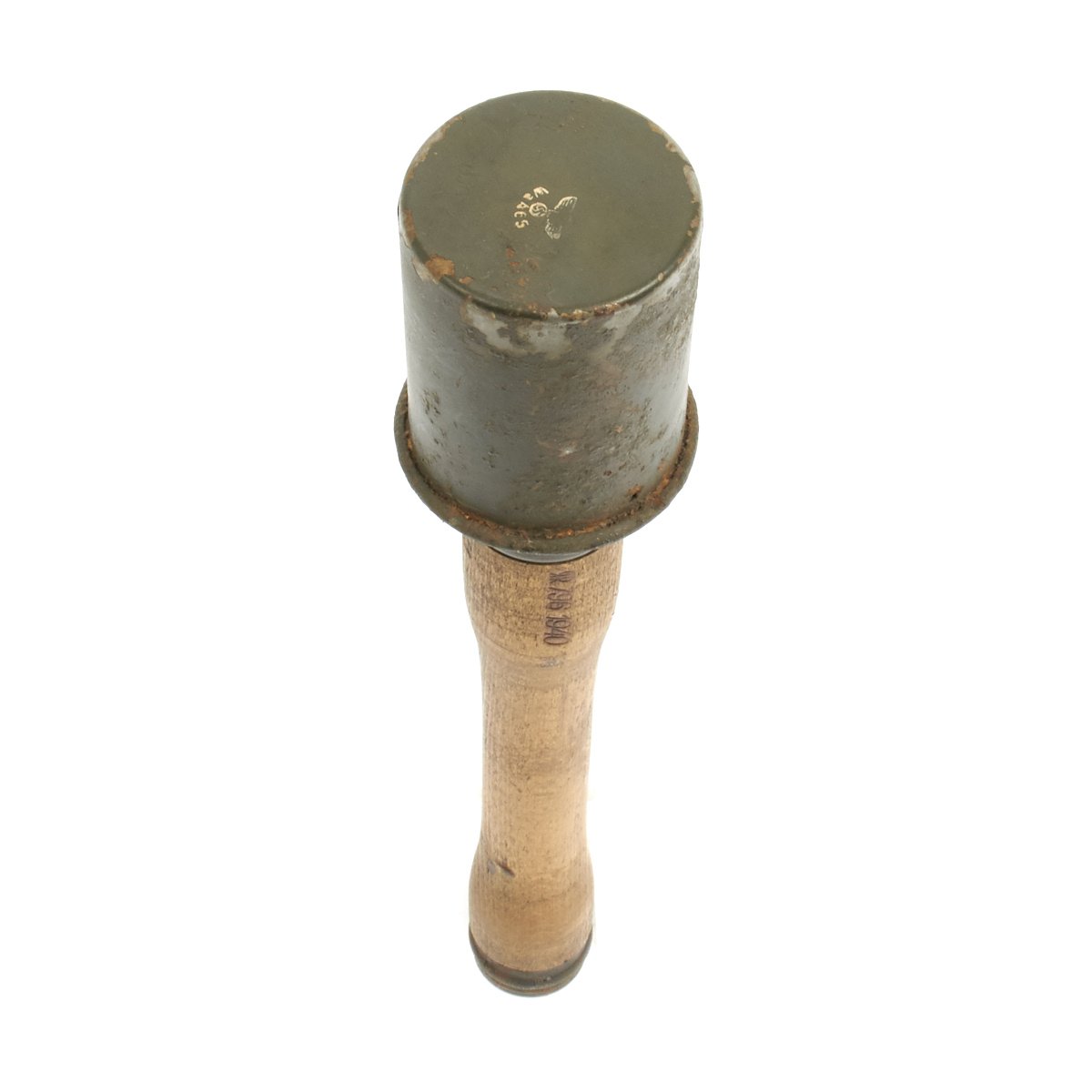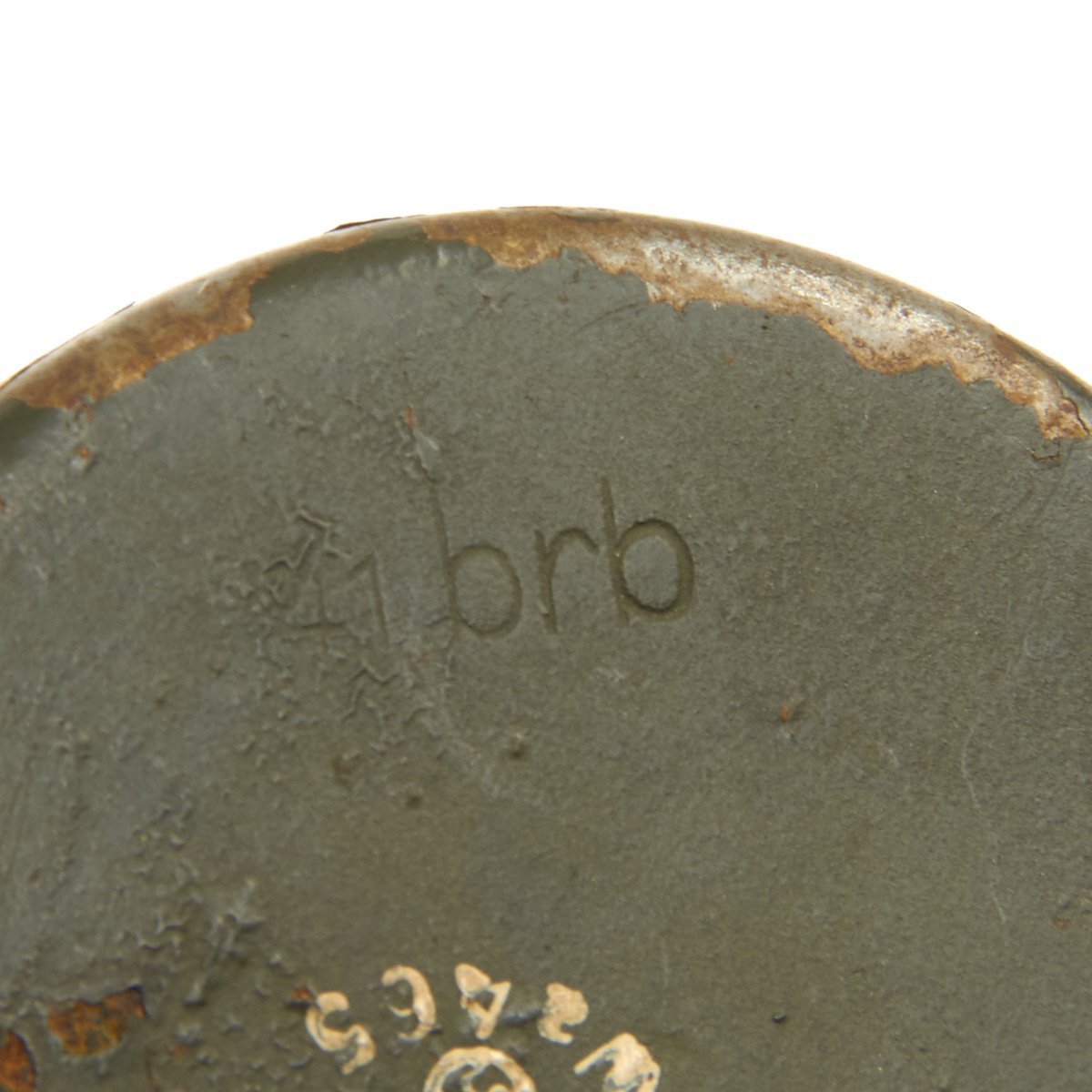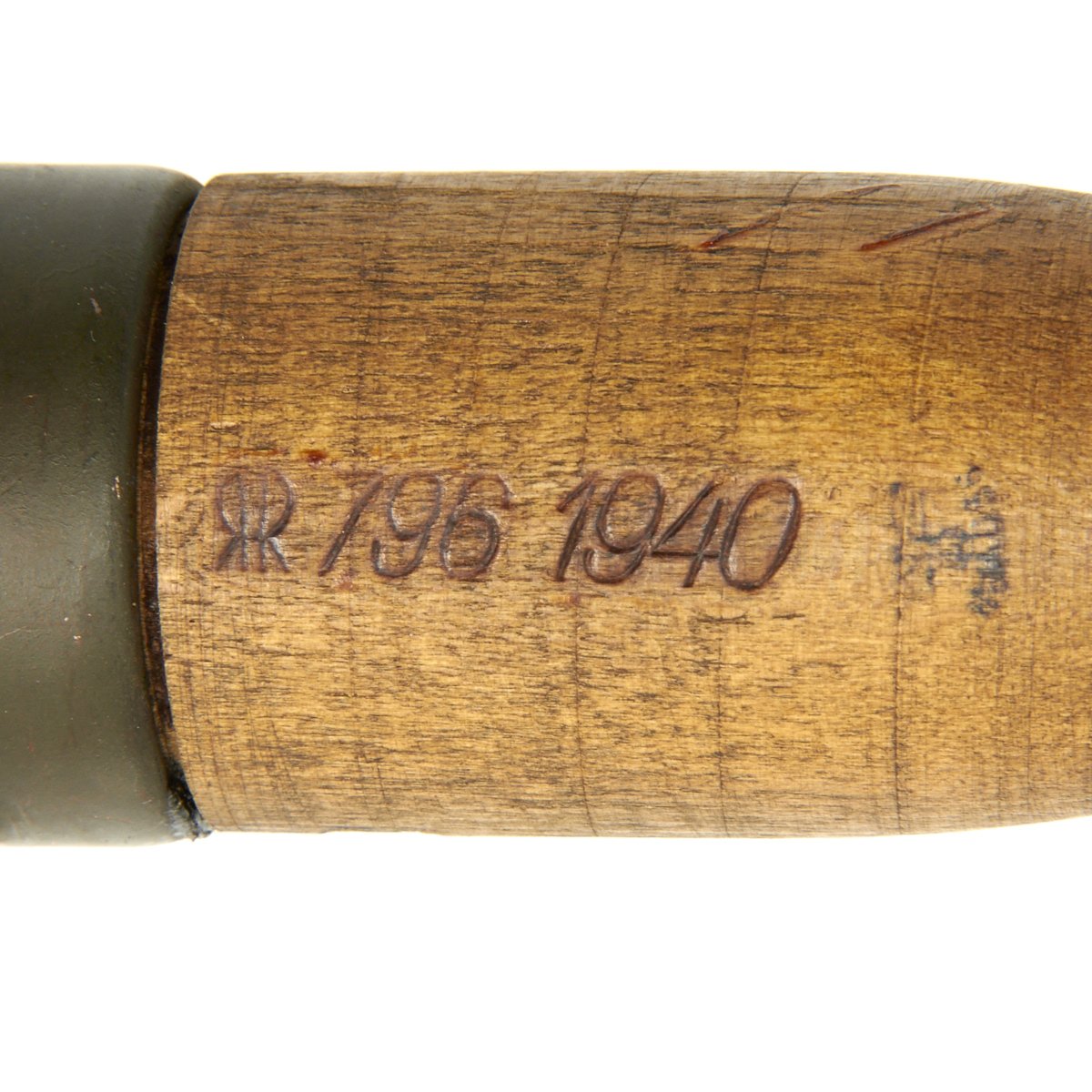Original German WWII M24 Stick Grenade – Marked brb 41 Original Items
$ 795,00 $ 238,50
Original Item: Only One Available. This is an excellent example of an extremely rare M1924, M24, or “Stielhandgranate 24” German Stick Grenade, often called a “potato masher”. This excellent example, acquired from the family of a WWII veteran, has been demilitarized according to specifications by the BATF. The warhead still unscrews, as does the bottom cap, which reveals the original pull string and porcelain bead. It still retains its original paint on the warhead, and the original markings can be seen on the head and shaft of the grenade.
The top of the warhead bear smanufacturer code 41 brb, well as a white Waffen Amt eagle with code WaA65. Both codes corresponds to Richard Rinker GmbH, Menden, Kreis Iserlohn. Richard Rinker GmbH was founded in 1910, and was situated in Menden in Iserlohn. It specialized in the production of castings, especially of building hardware made of brass. In the mid-1930s the production was switched to light metals. They were still in production in 1991, manufacturing heaters under the name BAUFA-Werke Richard Rinker GMBH. Warhead is empty and demilitarized, it screws off easily from shaft.
The fine wood shaft bears clear crisp markings ЯR 796 1940. This code corresponds to Peter Schlesinger, Metallwarenfabrik, Offenbach a.M. The company was founded by Peter Schlesinger (1859-1934) in 1885, and made accessories and spare parts for the bicycle and automotive industry. Their bicycle lights were sold under the brand “Radsonne” (bicycle sun). During WW2 they manufactured cleaning kits for small arms (Reinigungsgerät 34), Smoke handgrenades (Nebelhandgranaten), Stielhandgranate 24 and Stielhandgranate 43.
Typically stick grenades did not have the same manufacturer for shaft and head.
In WW2 the stick of the German M24 (Model 24) grenade provided a lever, significantly improving the throwing distance. The Model 24 could be thrown approximately 30 to 40 yards, whereas the British Mills bomb could only be thrown about 15 yards. The design also minimized the risk of the grenade rolling downhill back towards the thrower when used in hilly terrain or in urban areas. These grenades were extremely useful for clearing out entrenched infantry positions.
As grenades were disposable, encountering them on the market is very rare, especially with the original pull string and weight, making this an excellent opportunity to acquire one to complete a WW2 ordnance collection.
Fast Shipping with Professional Packaging
Thanks to our longstanding association with UPS FedEx DHL, and other major international carriers, we are able to provide a range of shipping options. Our warehouse staff is expertly trained and will wrap your products according to our exact and precise specifications. Prior to shipping, your goods will be thoroughly examined and securely secured. We ship to thousands clients each day across multiple countries. This shows how we're dedicated to be the largest retailer on the internet. Warehouses and distribution centres can be located throughout Europe as well as the USA.
Note: Orders with more than one item will be assigned a processing date depending on the item.
Before shipping before shipping, we'll conduct a thorough inspection of the items you have ordered. Today, the majority of orders will be delivered within 48 hours. The delivery time will be between 3-7 days.
Returns
The stock is dynamic and we cannot completely manage it because multiple stakeholders are involved, including our factory and warehouse. So the actual stock may alter at any time. It's possible that you may not receive your order once the order has been made.
Our policy is valid for a period of 30 days. If you don't receive the product within 30 days, we are not able to issue a refund or an exchange.
You can only return an item if it is unused and in the same state as the day you received it. You must have the item in its original packaging.
Related products
Uncategorized
Uncategorized
Uncategorized
Uncategorized
Australian WWII Owen MK1 Machine Carbine SMG Custom Fabricated Replica with Sling Original Items
Uncategorized
Uncategorized
Uncategorized
Uncategorized
Uncategorized
Armoured Fighting Vehicles of the World: AFVs of World War One (Hardcover Book) New Made Items
Uncategorized
Armored Burgonet Helmet & Polearm from Scottish Castle Leith Hall Circa 1700 Original Items
Uncategorized
Uncategorized
Uncategorized
Uncategorized
Uncategorized
Uncategorized
Uncategorized
Uncategorized












































































